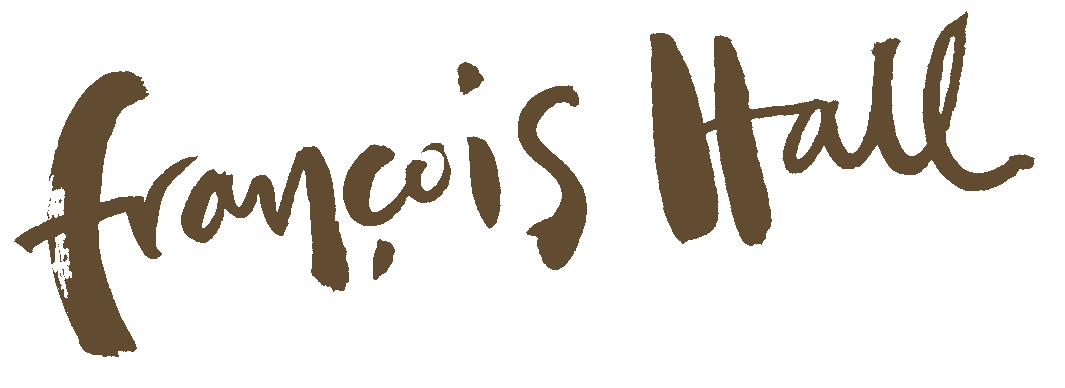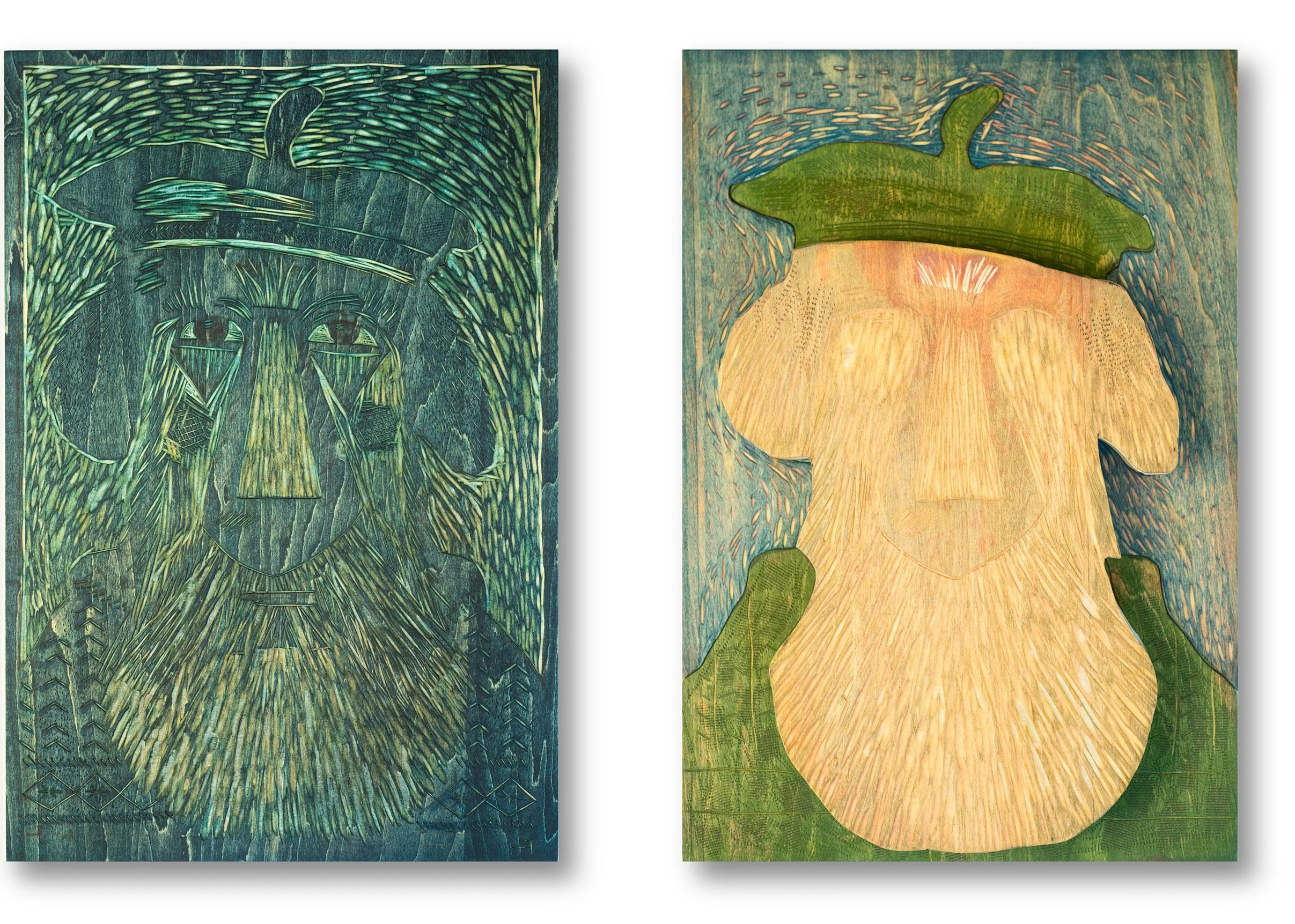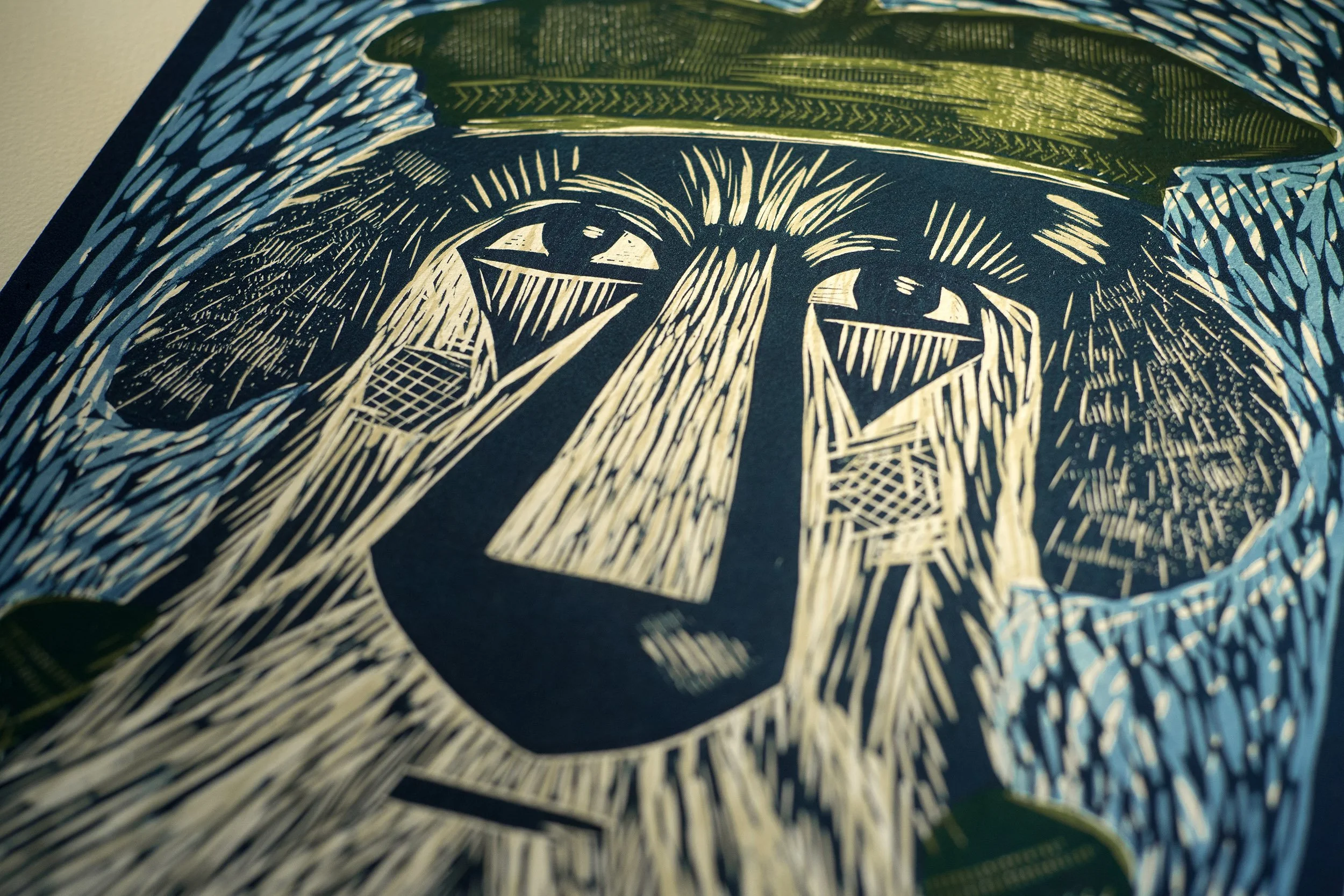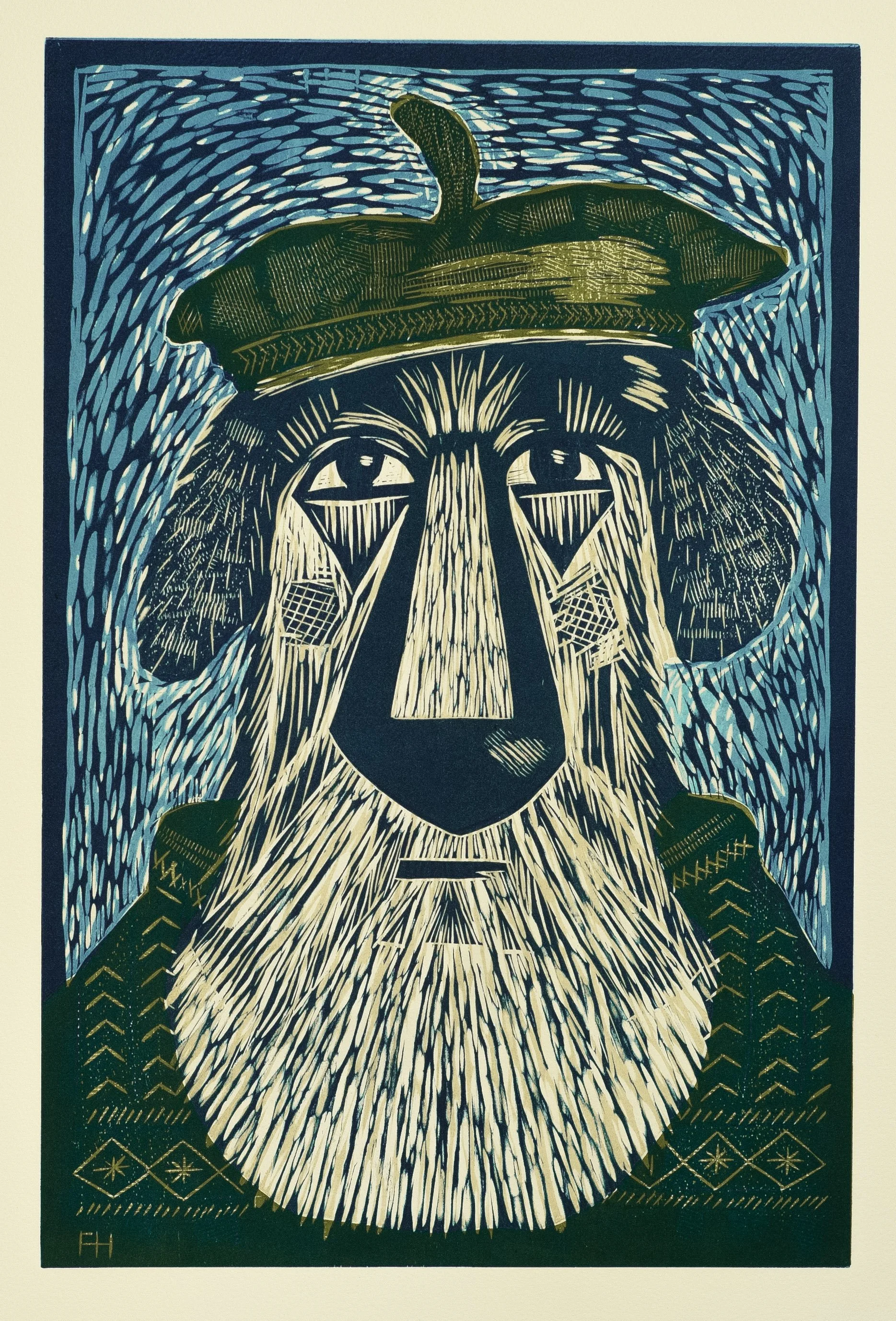Relief Printing
Relief printmaking processes use a printing block or plate (the matrix) from which the design to be printed stands proud - in relief. Areas not to be printed are cut away so that only the design remains at the original surface level, and will receive the ink. Woodcut is the earliest method of relief printing, although other materials are now commonly used such as linoleum and cardboard. When using Japanese plywood as a matrix, sharp knives, chisels and gouges are used to cut the design and clear away areas not to be printed. Scraping and stippling can also be used to create areas of texture. The matrix is then rolled with ink and printed on a press, although a hand burnisher can also be used.
There is an energy and directness to the woodcut image that I try to capture when creating an image. When working with multicolour prints this also involves a certain amount of pre-planning. I prefer working with separate blocks, one for each colour, although sometimes the jigsaw method (see image above) allows for more complex combinations. I find it more flexible than using the reduction technique that uses a single matrix whichis re-cut between printings for additional colours, because multiple blocks allow more freedom in the design to explore other colourways. Once the image is drawn onto the block, I work directly into the wood using a variety of cutting and scraping tools, my priority is always to experiment with marks and textures as I progress. Once the blocks are cut, careful consideration is given to mixing the ink colours and having the right amount of transparency for when they are overprinted.



